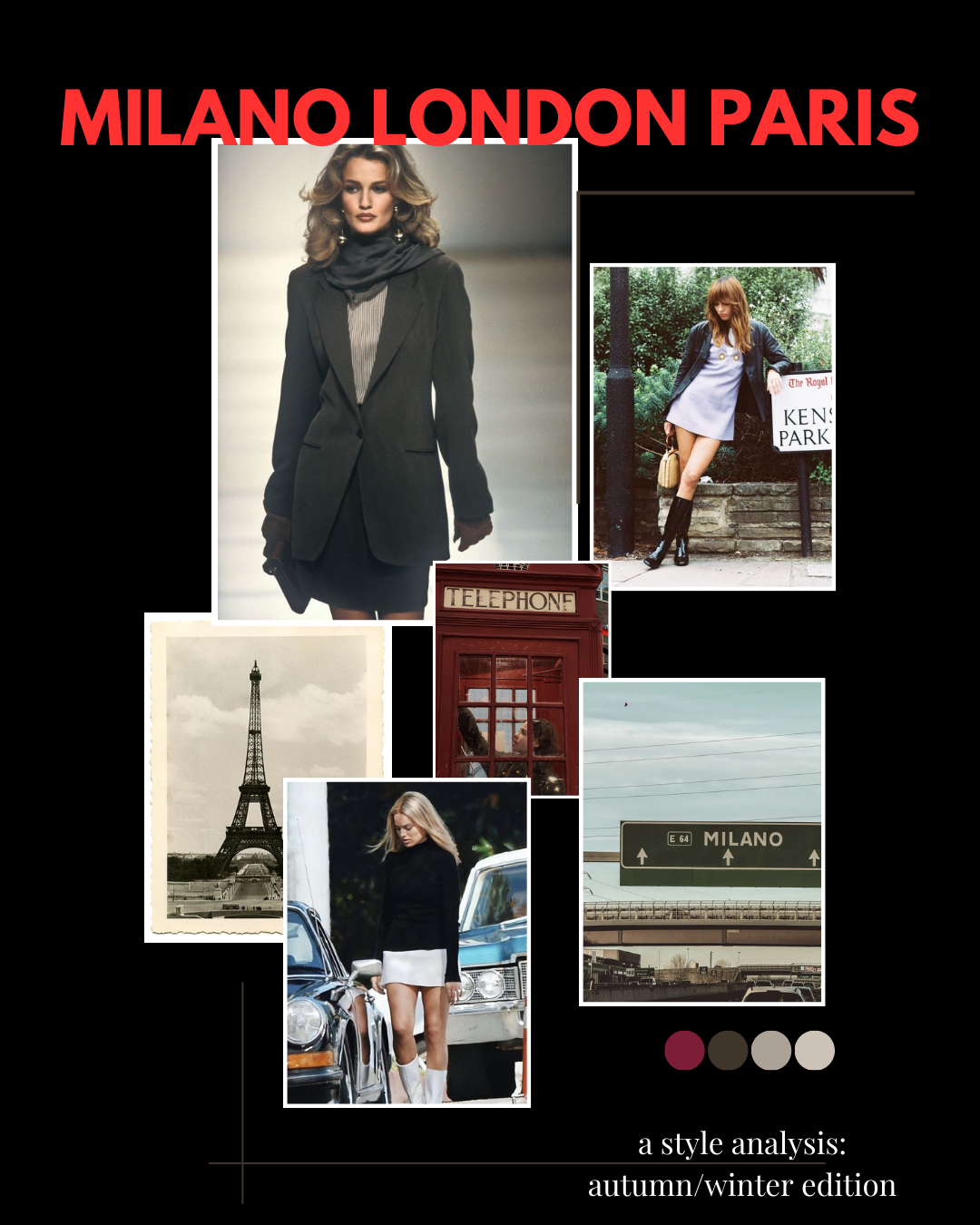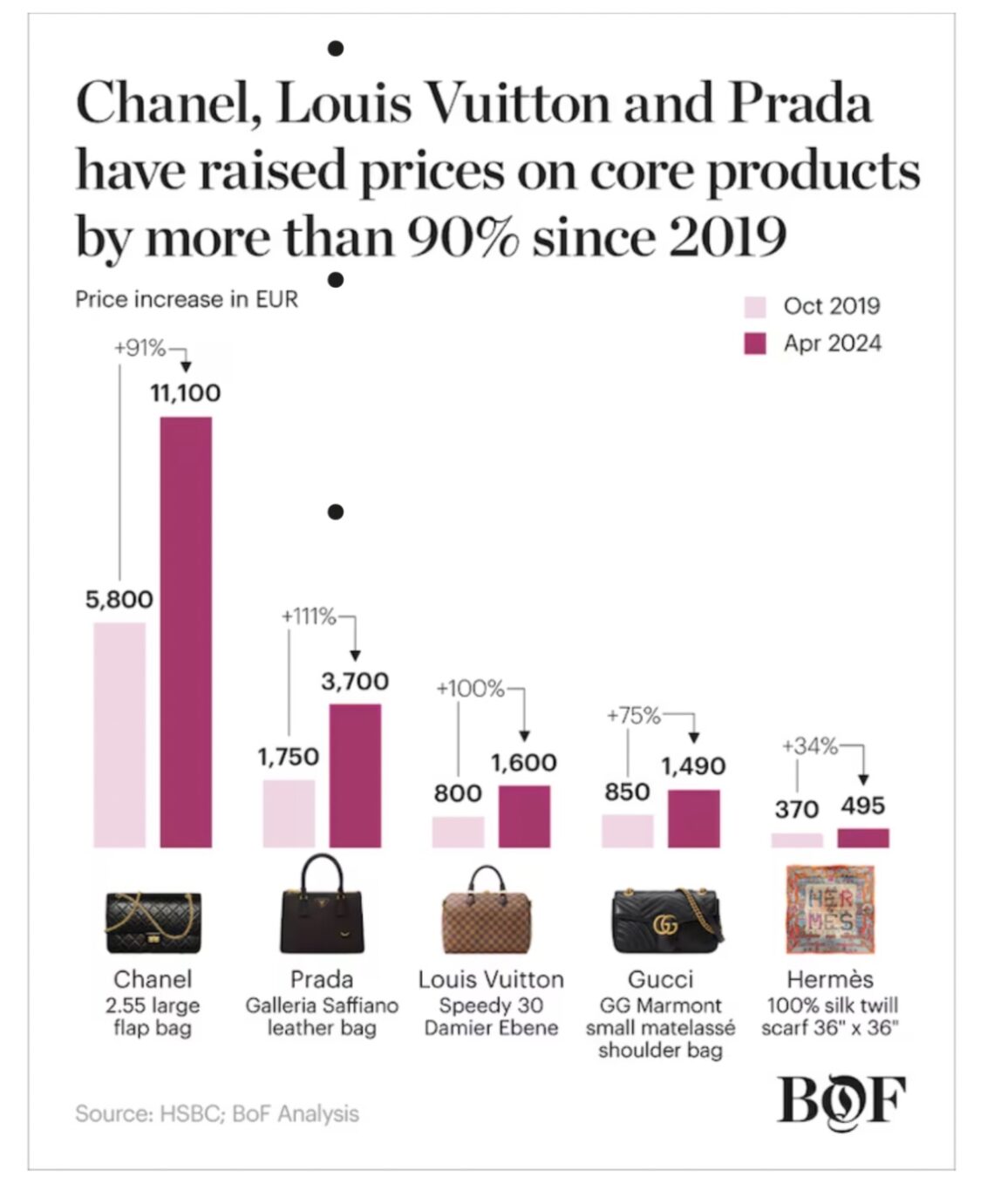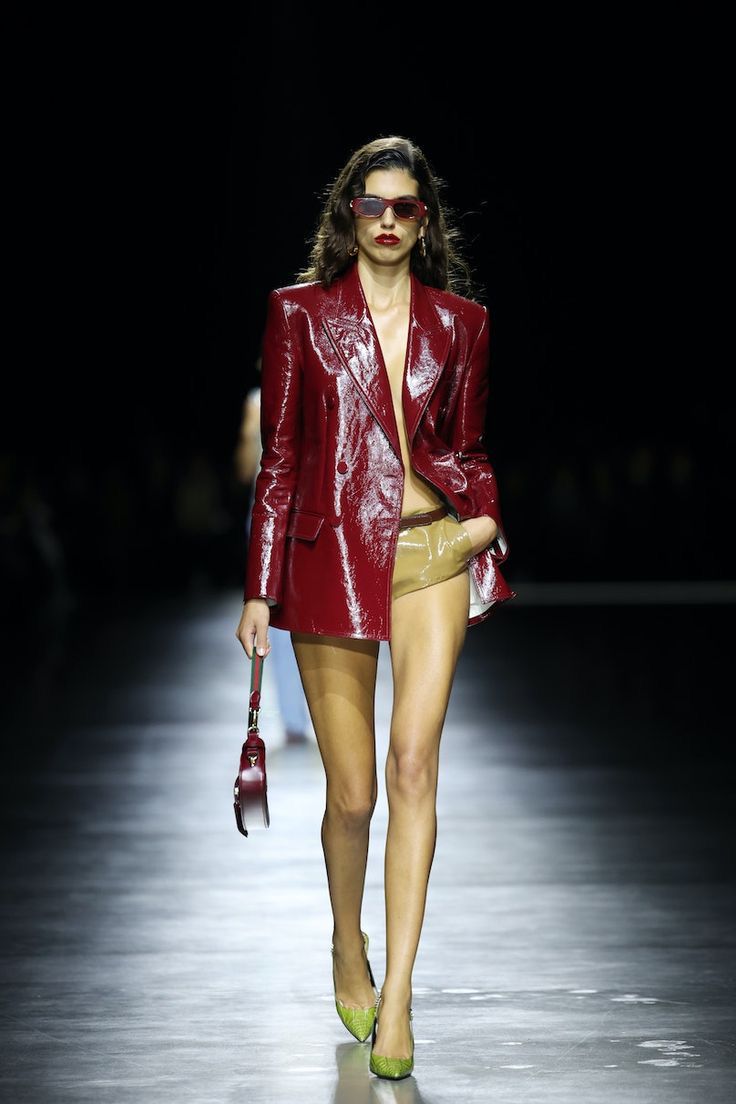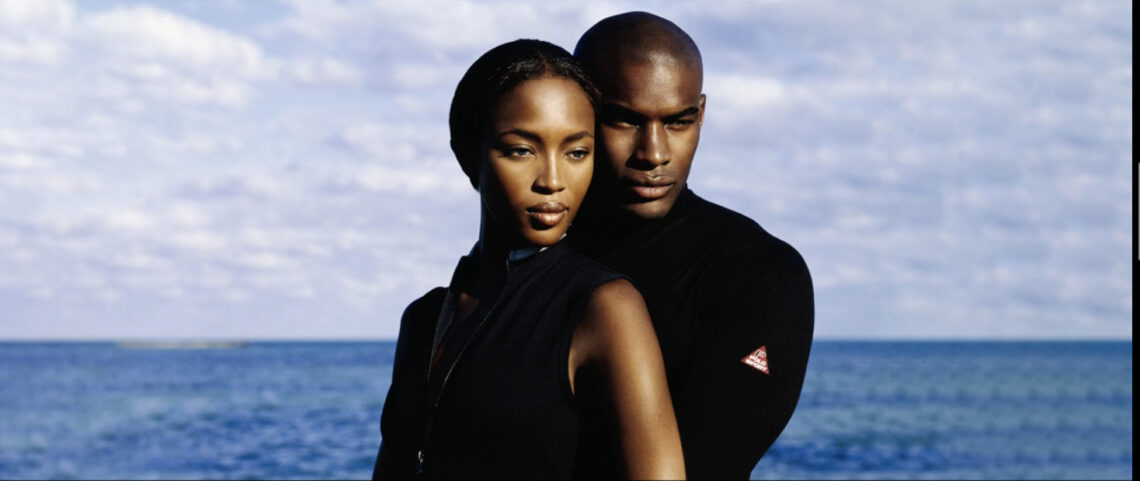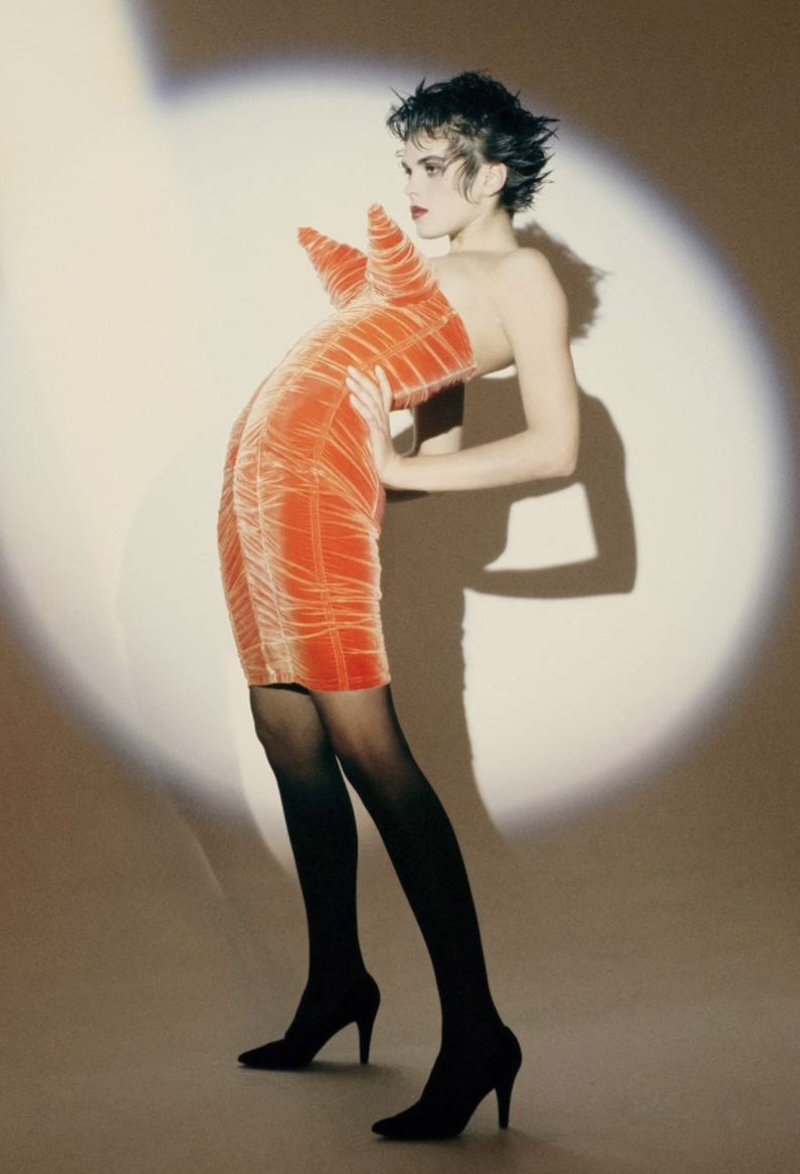These three cities, often dubbed “fashion capitals of the world,” each present distinct styles that inspire millions. But what makes each city’s style so iconic and unique? Milano is synonymous with polished elegance and luxurious craftsmanship, but there’s a rich cultural layer to the Milanese style that extends beyond refinement. Milan embodies a distinctly Italian passion for quality materials, with leather playing an especially prominent role. Whether in handbags, jackets, or boots, leather is not just a material but an art form here. Autumnal streets see rich textures everywhere: from leather to wool and cashmere, creating a warm yet sophisticated aesthetic. Slim-cut jeans, sleek turtlenecks, and tailored silhouettes are Milanese…
-
-
Luxury’s Price Paradox: Why Soaring Costs are Alienating Consumers
Much has been documented on the luxury industry’s recent slowdown: its sluggish sales, falling revenues, and creative upheaval since the post-Covid boom ended. Many culprits have also been found to blame: weak Chinese demand, a lack of creativity from designers, and inflation have all been named at fault. Undoubtedly these factors have contributed to luxury’s crisis, but a more subtle offender might have played a large part: luxury’s latest hot trend, price hikes. Price hikes have always been an essential part of the luxury industry’s business model. Luxury goods in economics are known as Veblen goods, which operate contrary to normal demand-supply economics. For Veblen goods, the rise in price…
-
Who is the Schiaparelli Woman? A Look into Roseberry’s Muse for the Modern Era
In the high-stakes world of luxury fashion, where brands constantly reinvent themselves to stay relevant, Schiaparelli under Daniel Roseberry has captured attention with a bold, surrealist approach that is anything but conventional. His designs have transformed Schiaparelli’s legacy from a historical fashion house into a modern-day powerhouse, and at the center of this reinvention stands the enigmatic “Schiaparelli woman”. She’s daring, she’s otherworldly, and she’s far from what we might expect from couture. But who exactly is she, and what makes her so different? When Roseberry took over as creative director in 2019, he had big shoes to fill. Elsa Schiaparelli, the brand’s founder, was one of the most eccentric…
-
Is Fur Passé?
Once synonymous with luxury and status, fur has seen a steep decline in the global fashion industry. Historically, fur symbolized opulence and exclusivity, adored for its natural warmth, tactile appeal, and durability. Designers like Christian Dior, Yves Saint Laurent, and Fendi transformed it into a fashion icon, creating innovative designs that embodied elegance and sophistication. Hollywood amplified its allure, with stars like Marilyn Monroe and Elizabeth Taylor gracing the silver screen in fur, cementing its association with glamor. Marilyn Monroe At its peak, fur was not just a fashion statement but a marker of wealth and timeless luxury. Fur coats, stoles, and accessories were often passed down through generations, highlighting…
-
Time for Change: Bridging the Intention-Behavior Gap in Fashion Consumption
Unlock the power of your purchases to reshape the future! Harvard Business Review Unraveling the Disconnect Between What We Say and What We Do! The fashion industry, often celebrated for its creativity and innovation, paradoxically stands as one of the largest contributors to global sustainability challenges. With its significant impact on carbon emissions, plastic waste, and landfills, the industry’s responsibility in combating climate change cannot be overstated. As the urgency for sustainability rises, a troubling phenomenon—the intention-behavior gap—has emerged, wherein consumers express a strong desire to purchase ethically made fashion items, yet their purchasing behavior frequently contradicts these intentions. This discrepancy not only questions the authenticity of consumer values but…
-
Is Sabato de Sarno Reshaping GUCCI?
Over the past year, the Gucci runway has stolen the spotlight of Milan fashion week stirring conversations and mixed opinions. The spring/summer 2024 collection unveiled a new era at Gucci with the arrival of Sabato De Sarno. By closing the doors of Alessandro Michele’s maximalist approach, the new designer brings a fresh sophisticated touch to the brand by replacing Michele’s eclectic signature with more minimalist designs. Given that De Sarno changed the brand’s image, some critics mention that he is compromising the brand’s identity. Some would even say that Gucci is losing its edge. With that being said, can we talk about a reinvention of Gucci or is it actually…
-
Wilderness in Fashion: The Evolution of Leopard Print
No other print has embodied so many contradictory meanings as leopard print, which has been at the same time a symbol of status and luxury for some, and of being tacky for others. The sophisticated symbolism behind it has made it an inseparable part of fashion. Its popularity may rise and decline, but leopard print has a significant cultural resilience. To follow its traces, we go back in time to the early civilizations. Long ago, our ancestors used the pelts of the animals they killed as clothing. Gods of different civilizations such as Seshat, the Egyptian goddess of wisdom, and Dionysus, the Greek god of wine and hedonism, were often…
-
Ralph Lauren – The American Moment
Series: In Vogue: The 90s Season 1 Episode 06: The American moment “In the 90s in New York, everywhere you went you were bombarded with all these huge billboards. Sort of selling the dream, the American Dream.” American designers at the moment understood that fashion was becoming much more democratic and accessible. Ralph Lauren being one of those designers, really understood the assignment, furthermore the power of communication as well as blanketing the world with advertisement. Even by being a preppy fashion house, diversity was delivered in every aspect. But let’s start from the American Dream “Everyone has a little bit of a dream, they want to be that guy…
-
Spring/Summer 2025: An Overview
NEW YORK FASHION WEEK New York Fashion Week (NYFW), ran from September 6th to September 11th this year, although Ralph Lauren shook things up with a surprise relocation to the Hamptons to kick off the week, which he described as “my refuge”. Guests enjoyed the warm weather and seaside setting that matched the coastal-coded pieces that Ralph Lauren sent down the runway. The collection was well-liked by the fashion industry. Although there was nothing particularly adventurous, it was a classic contribution to Lauren’s portfolio that evoked equestrian-influenced all-American aspirational style he’s best known for. Resplendent with a star-studded crowd, the Hamptons runway was a clever move that honed in on…
-
Homage VS Imitation: Dolce & Gabbana SS25 Walks a Fine Line
Dolce & Gabbana’s SS25 runway felt like a walk down memory lane, with models flaunting blonde wigs, cone bras, and corsets – straight out of a Madonna playbook. While the looks were undeniably a bold expression of femininity, it felt all too familiar. If you couldn’t shake the feeling of déjà vu as well, it is because we have already seen this – courtesy of Jean Paul Gaulthier. It is no secret that Gaulthier was known for his unconventionality and outlandish designs. Inspired by the bullet bra of the 1950s, he debuted his first inspired interpretation down the runway for his F/W 1984 collection. Gaulthier took his cone bra to…

